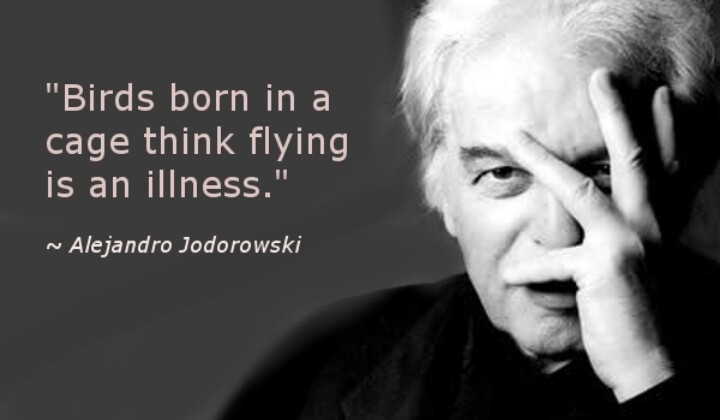A lot of people wanna be cool, and even more people want at least to appear cool to others. This is probably why much of the self-help advice out there focuses on how to adopt the external demeanor of a cool person, in order to create the perception of being cool.
It’s not an entirely bad strategy; a “fake it till you make it” approach can work sometimes, in some situations. However, there are some serious problems with trying to look cool, which I’ve discovered both through my own experience and those of my communication coaching clients.
So I wanna talk about these problems, and provide a much better alternative to trying to look cool. The major problems are three in number:
1. Improper Social Calibration
Successfully appearing cool is not only about adopting a set of edgy behaviors; it’s also about using them at the right time and at the right intensity. These behaviors need to be properly calibrated to the social situation you’re in. And if they don’t come from the inside, good social calibration is very hard to pull off.
It’s very common for men and women trying to look cool to go over the top with some actions and gestures. For example, many guys read online that, in order to look cool or “alpha”, they should take up a lot of space, especially when sitting down. But they’ll seriously overdo it. That’s how you’ll see some guy at a party, stretching on a sofa like a pancake, taking up three spots, and thinking he’s being cool. He’s not being cool; most likely he just looks like a weirdo.
2. Behavioral Leakage
 Behavioral leakage is a very interesting psychological concept, which says that if you try to act out of character, your true character and emotional state will tend to come out in subtle ways. They will leak out, and do so repeatedly, despite your desire to repress them.
Behavioral leakage is a very interesting psychological concept, which says that if you try to act out of character, your true character and emotional state will tend to come out in subtle ways. They will leak out, and do so repeatedly, despite your desire to repress them.
For instance, during a conversation with a member of the opposite sex, maybe you act confident and cool, and maybe they buy it for a few minutes. But at some point they make a teasing remark about you (maybe comment on your beer belly or something), and for a few seconds, your true insecure self involuntarily comes out. It can be something subtle like breaking eye contact, fidgeting, or nervous laughter. Either way, the person will probably tell that you’re actually not as confident as you initially seemed. Even if you get back into your act really fast, your insecurity has leaked out.
3. The High Energy Drain
Since trying to appear cool through deliberate actions entails playing a role, it will be very demanding on your mental and physical energy. It’s hard to keep up an act, even for a short while. Many of my coaching clients have shared with me that when they were acting out of character, even a 45-minute conversation with another person for a coffee was exhausting.
Since the energy drain of trying to look cool is high, it means you can’t keep up the act for too long. Eventually, the large part of your real self will come out with bells and whistles, especially as you interact repeatedly with someone and you end up having longer interactions. And even if you can keep up the act, it takes all the fun out of socializing.
So, due to improper calibration, behavioral leakage and the high energy drain, trying to appear cool to others is not a good strategy. What’s the alternative then? There is a very good one, which takes more time, but has a huge return on investment.
Develop the Mental State of Cool
Our mental state influences our behavior to a large degree. People who naturally behave and look cool do so because they are in a mental state conducive to that, which I call the mental state of cool.
What does this state imply? First and foremost, I’d say it implies feeling confident and composed in social situations. That’s the main thing. It also involves liking yourself and having a positive self-image, which relates closely to social confidence. And it’s also about feeling okay being yourself and expressing your unique side in social settings, while at the same time seeking to stay connected to other people’s needs.
When you have this kind of a mix of attitudes, your social behavior simply oozes cool. And it’s not the kind of superficial cool that comes with having the latest fashionable smartphone; it’s the kind of meaningful cool reflected in a centered, expressive and appealing demeanor.
Developing the mental state of cool does not happen overnight. It takes some time, and perhaps some guidance. You need to work on your beliefs system and automatic emotional reactions to reach a perpetual mental state of cool. But it is definitely worth it; because actually being cool is 100 times better than just pretending to be cool.
I’ve been helping people develop their social confidence and the state of cool for almost a decade now. If you wanna learn how to do it, I encourage you to check out right now this instructional video I created, in which I’ll share with you some of my top psychology advice for building social confidence and becoming a cool, charismatic person.
Also, join my free social success newsletter, where I share regularly tried and tested techniques for improving your confidence and your social skills.
Personal development usually works best from the inside out. Build your social confidence, learn how to manage your mental state in social situations, and the right behavior and right results will follow naturally.


 For example: I recently learned about a supposed method to predict market trends and make good financial investments, based on something called Kondratiev waves.
For example: I recently learned about a supposed method to predict market trends and make good financial investments, based on something called Kondratiev waves. Based on these two distinct mindsets, you can deduce some of the differences between confidence and arrogance yourself, as they manifest in people’s behavior.
Based on these two distinct mindsets, you can deduce some of the differences between confidence and arrogance yourself, as they manifest in people’s behavior.

 For instance,
For instance,  Psychologist and neuroscientist Matthew D. Lieberman really drives this point home in his book,
Psychologist and neuroscientist Matthew D. Lieberman really drives this point home in his book,